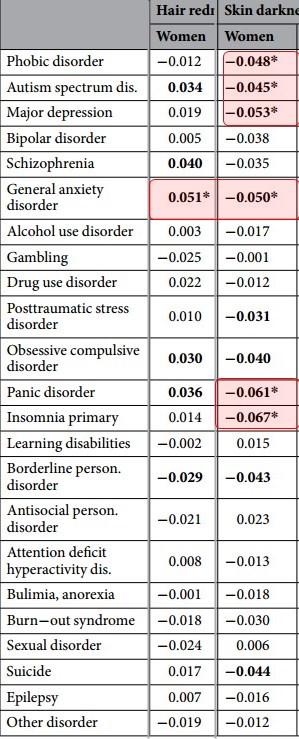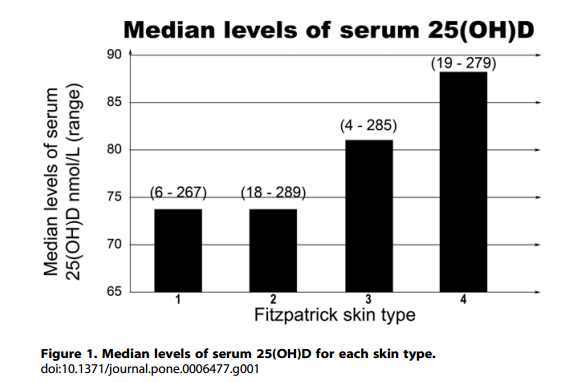Fair skin has lower vitamin D levels than dark skin – contrary to other studies – 2009
Pigmentation and vitamin D metabolism in Caucasians: low vitamin D serum levels in fair skin types in the UK.
PLoS One. 2009 Aug 3;4(8):e6477.
Glass D, Lens M, Swaminathan R, Spector TD, Bataille V.
Department of Twin Research and Genetic Epidemiology, Kings College London, St Thomas' Hospital Campus, London, UK.

BACKGROUND: Vitamin D may play a protective role in many diseases. Public health messages are advocating sun avoidance to reduce skin cancer risk but the potential deleterious effects of these recommendations for vitamin D metabolism have been poorly investigated.
METHODOLOGY/PRINCIPAL FINDINGS: We investigated the association between 25-hydroxy-vitamin D (25(OH)D), skin type and ultraviolet exposure in 1414 Caucasian females in the UK. Mean age of the cohort was 47 years (18-79) and mean 25(OH)D levels were 77 nmol/L (6-289). 25(OH)D levels were strongly associated with season of sampling with higher levels in the spring and summer months (p<0.0001). Light skin types (skin type 1 and 2) have lower levels of 25(OH)D (mean 71 nmol/L) compared to darker skin types (skin type 3 and 4) (mean 82 nmol/L) after adjusting for multiple confounders (p<0.0001). The trend for increasing risk of low vitamin D with fairer skin types was highly significant despite adjustment for all confounders (p = 0.001).
CONCLUSIONS/SIGNIFICANCE: Contrary to previous studies across different ethnic backgrounds, this study within Caucasian UK females shows that fair skin types have lower levels of 25(OH)D compared to darker skin types with potential detrimental health effects. Public health campaigns advocating sun avoidance in fair skinned individuals may need to be revised in view of their risk of vitamin D deficiency.
PMID: 19649299

PDF is attached at the bottom of this page
